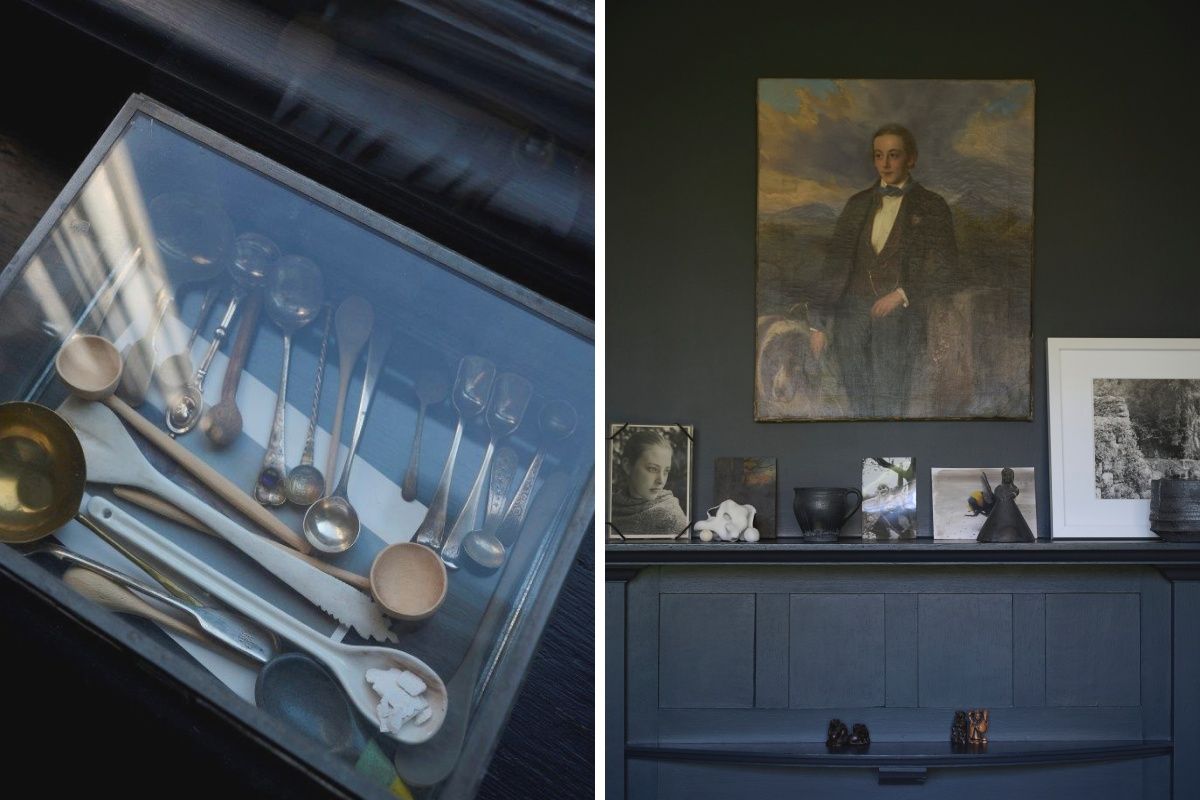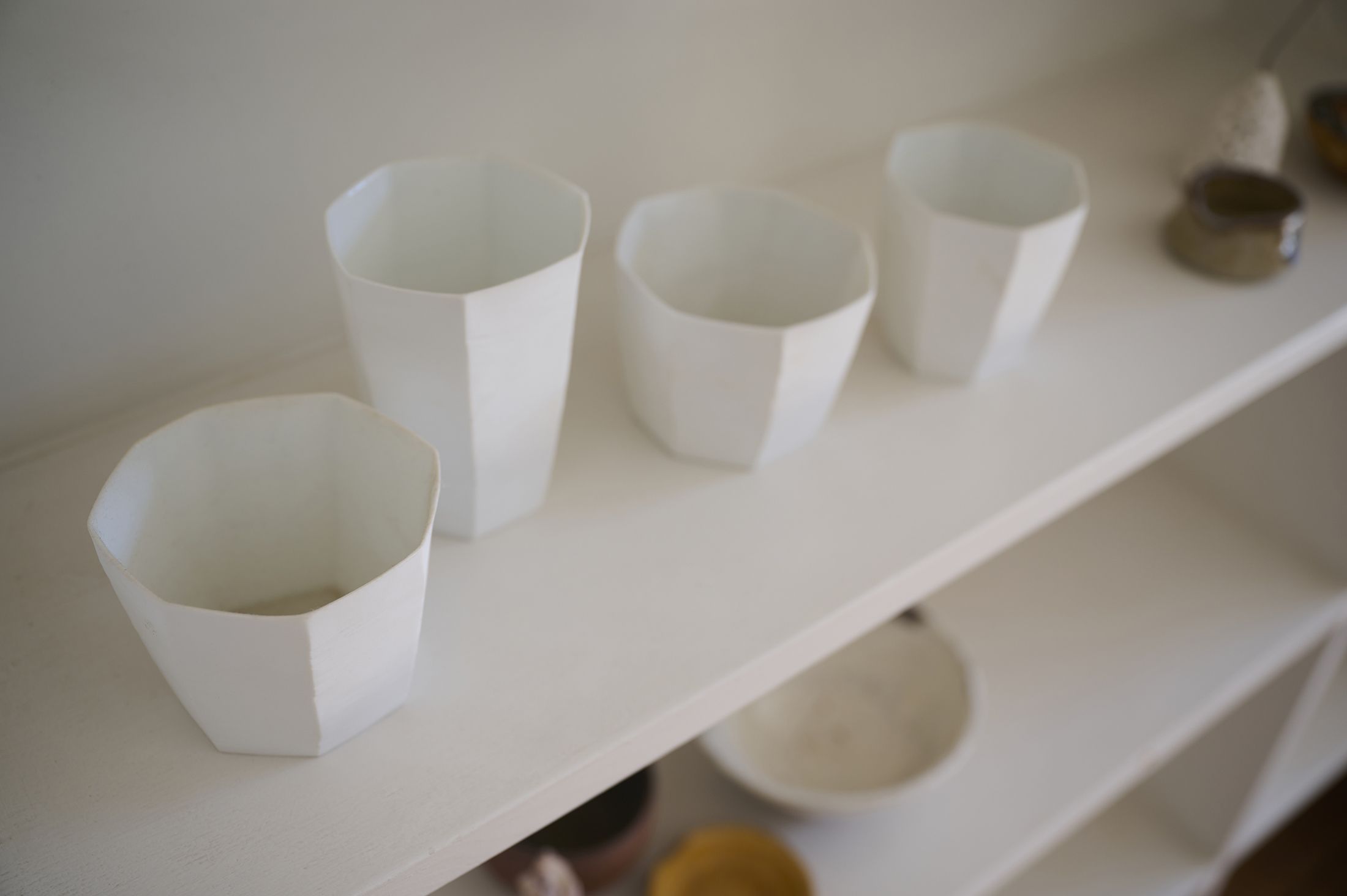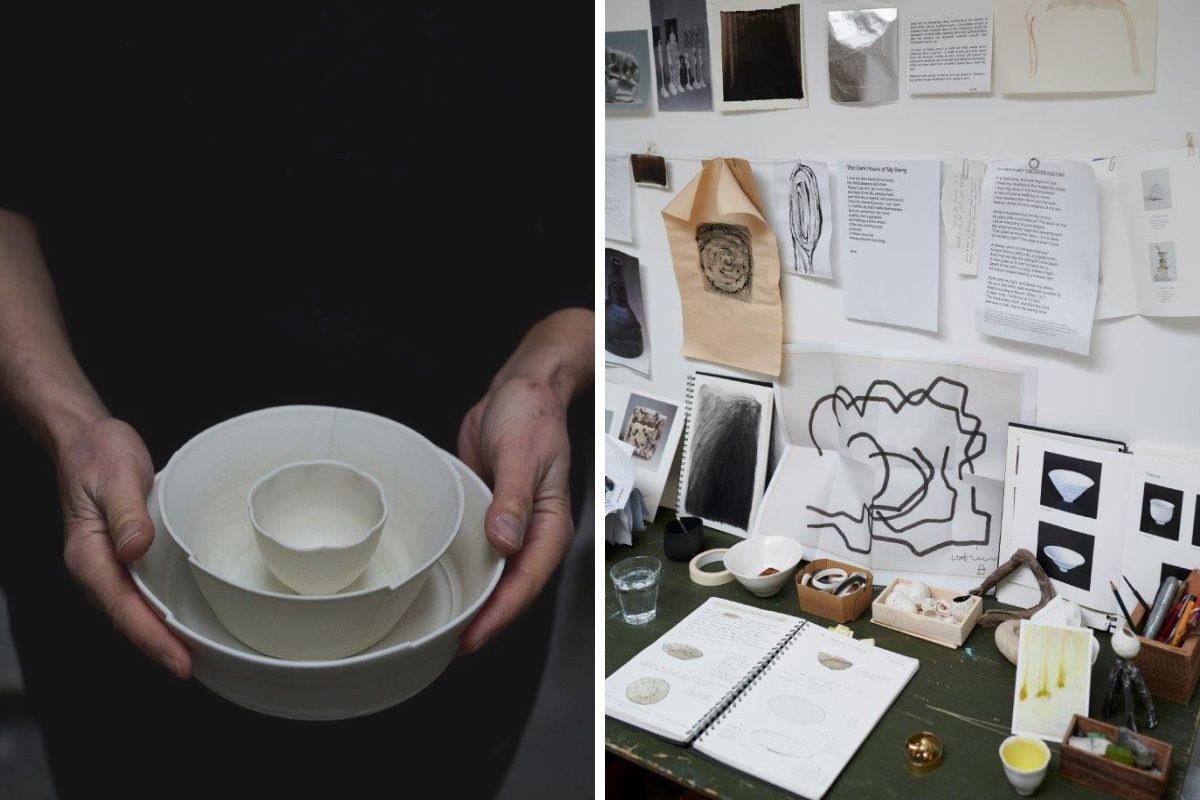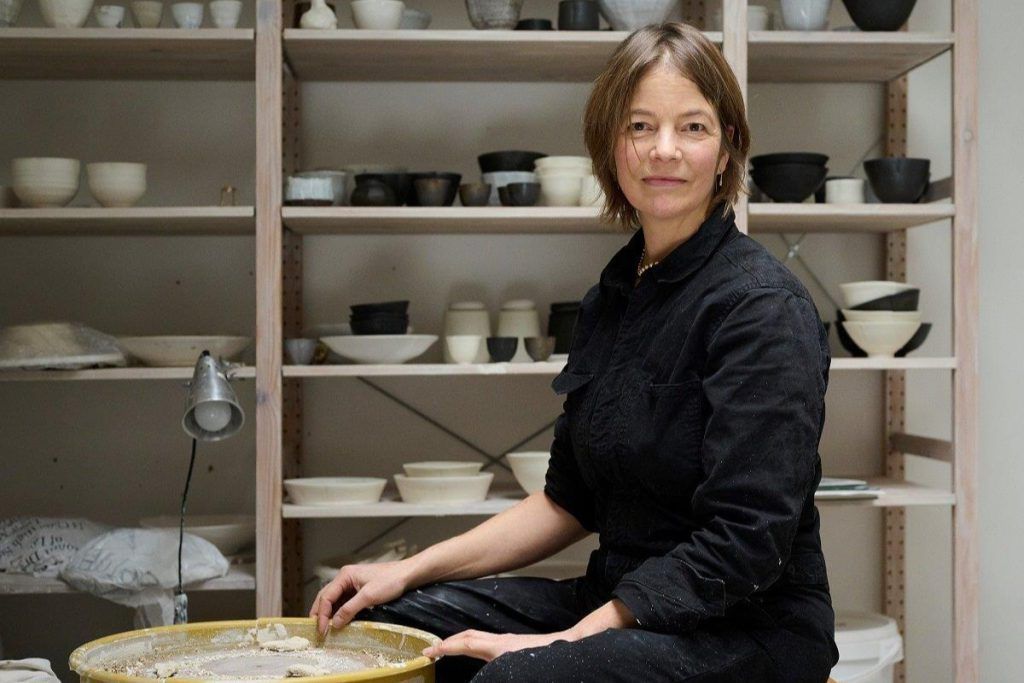In a world that moves ever faster, the act of slowing down to engage with materiality and memory feels more important than ever. ceramicist Olivia Horley’s practice invites us into that quiet space – where making is both reflection and connection, and objects quietly anchor the lives we live.
We first encountered Olivia during a shoot at her East Sussex home; a calm, carefully curated space – where objects are valued not only for their beauty and utility, but also for the stories they carry. With a practice deeply rooted in memory, materiality, and the slow rhythms of making, Olivia’s pottery invites us to consider the enduring power of objects in shaping how we live and remember.
In this conversation, Olivia shares her creative journey, her relationship to the handmade, and how her work inhabits the intersection of art and everyday life.
Can you share a bit about your creative journey?
Making things wasn’t a hobby or luxury in my childhood – it was simply part of life. We used what we made, made gifts rather than bought them, and were schooled with the thought that anything that came from the hand was better than what came from a machine. I started out studying fine art and worked in the art world, but gravitated towards pottery for the way it straddles the art/craft divide and enters daily life so unequivocally.
What drew you to explore memory, inheritance, and the objects we live with?
Our family has moved a lot – from China to Mexico, the US to the UK – and objects became a way of holding onto place and history, of passing on stories. We are also a family that has safeguarded things from generation to generation, passing them down as repositories of a familial past.

How do you think handmade objects, particularly ones made to be used, shape the way we experience home?
Objects of use are quietly powerful because they’re extensions of our bodies. They speak to the heart before the head, grounding us in the habits and rituals of daily life, and in our “creatureliness”. When handmade, there is an added warmth to this.

How does your philosophy around materials play out in your own home?
I choose natural materials wherever I can, but I’m not a purist. I have a poured cement floor, and I can appreciate plastics too, where they’re considered and not just expendable and too easily thrown away. I like materials that last, show a patina of time, and settle in a house.

What does craftsmanship offer in today’s world?
Making by hand reminds both maker and user of our humanity. There is a particular poetry of the hand. It’s nuanced in a way that mass production can’t replicate. This is not to say I don’t like mass produced things. There is a satisfaction in a well-designed mould-made mug too!
What does having art around you – your own or others – mean in your life?
I could not live without art around me, and I’m not sure many people could. It expands our reality, expresses the larger horizon of what we are as humans. I am visually hyper-alert, you might say, and so it matters what is in my house – whether it’s a giant lightbulb I once found in a skip, a stool i picked up in a junk shop, or the pot Edmund de Waal gave me when my son was born. I couldn’t live with something ugly or ill-considered.

Can you take us through a typical day in your studio? Do you have any rituals or routines that guide your making process?
I like to read something first thing in the morning of my making. Poetry, in particular, sets my mind thinking about form. Dog walking too sets my thoughts in the right frame to make. Otherwise, there is no typical day. It depends where I am in the process, preparing clay, throwing a series of vessels, making up test glazes, and so on. There are times spent looking at my ceramics book collection too, allowing my mind to meander a bit, dream into the process. Some days are teaching days, or hooking up with fellow makers.
Olivia’s work speaks to the quiet power of the handmade – to objects that are not only beautiful, but lived with, used, and remembered. Her approach, which resonates greatly with us, reflects a deep respect for materials, an appreciation of the presence of art in daily life, and a belief in the value of making.
We’ve loved reconnecting with Olivia and hearing more about her practice. If you’d like to see more of her work, a curation of her pottery is showcased on the online platform The Garnered. Also, she will be showing new work this August at sculptor Jo Sweeting’s studio as part of East Sussex’s Artwave festival. In October, she presents a joint exhibition with painter Daisy Cook at Linden Hall Studio in Deal, opening 4th October.

